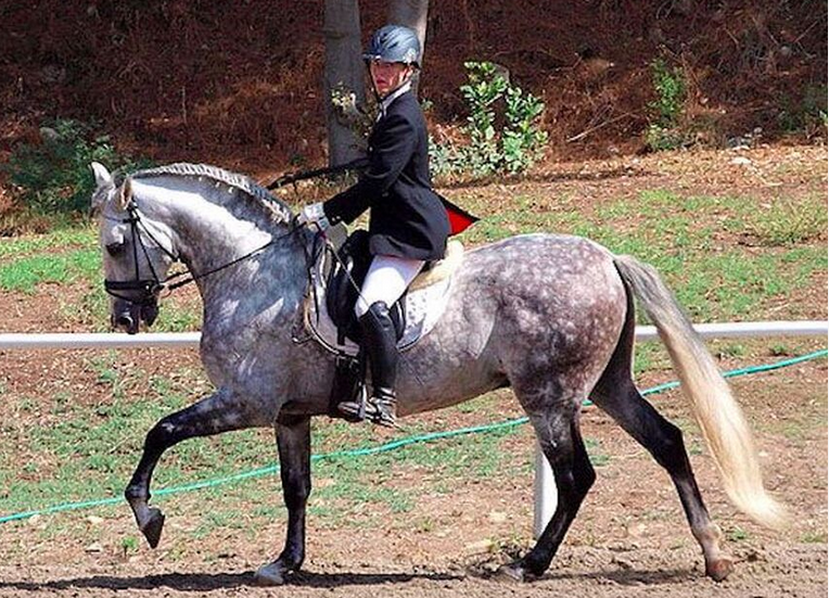|
|
|
How To Improve Your Scores at Second Level Dressage
Precision, accuracy, and quality are judged more strictly at second level than at Training or First.
Second-level dressage movements to focus on.
TRAVERS AND SHOULDER-IN
Make sure your transitions into and out of these movements occur exactly where they are supposed to occur. NOTE THAT TRAVERS IS NOW A 4-TRACK MOVEMENTS RATHER THAN 3 TRACK MOVEMENT. In 3-track, the horse’s outside hind steps on the same line as the inside fore leg. In 4-track, the haunches are moved to the side a little more so that each hoof travels on it’s own line. More information about these movements can be found here:
What travers, renvers, and shoulder-in are for
How to ride shoulder-in
How to ride travers
How to ride a half pass
SIMPLE CHANGE OF LEAD
Steps should occur directly over X at the simple change of lead.
TURN ON THE HAUNCHES
When doing turn on the haunches, your horse’s hind legs can travel on a 1-meter circle. More than that and it’s a turn around the middle, not haunches; less than that and it’s a pirouette. Be sure to begin the turn before the letter.
MEDIUM AND EXTENDED TROT AND CANTER
The quality of the transitions carry more weight at second level, so it matters not just that your horse executes a transition exactly where its supposed to happen, but the quality of the transition will weigh in on your scores quite heavily.
As long as you’re here, check these out!
Equestrian Products That Make Your Riding and Horse Care Easier and Better!
How to get a horse to lengthen its gait
Working, medium, extended, and collected trot: What's the difference?
Copyright Denise Cummins, PhD Feb 6 2016; updated Jan 22, 2020; updated June 10, 2024
The Thinking Equestrian
TRAVERS AND SHOULDER-IN
Make sure your transitions into and out of these movements occur exactly where they are supposed to occur. NOTE THAT TRAVERS IS NOW A 4-TRACK MOVEMENTS RATHER THAN 3 TRACK MOVEMENT. In 3-track, the horse’s outside hind steps on the same line as the inside fore leg. In 4-track, the haunches are moved to the side a little more so that each hoof travels on it’s own line. More information about these movements can be found here:
What travers, renvers, and shoulder-in are for
How to ride shoulder-in
How to ride travers
How to ride a half pass
SIMPLE CHANGE OF LEAD
Steps should occur directly over X at the simple change of lead.
TURN ON THE HAUNCHES
When doing turn on the haunches, your horse’s hind legs can travel on a 1-meter circle. More than that and it’s a turn around the middle, not haunches; less than that and it’s a pirouette. Be sure to begin the turn before the letter.
MEDIUM AND EXTENDED TROT AND CANTER
The quality of the transitions carry more weight at second level, so it matters not just that your horse executes a transition exactly where its supposed to happen, but the quality of the transition will weigh in on your scores quite heavily.
As long as you’re here, check these out!
Equestrian Products That Make Your Riding and Horse Care Easier and Better!
How to get a horse to lengthen its gait
Working, medium, extended, and collected trot: What's the difference?
Copyright Denise Cummins, PhD Feb 6 2016; updated Jan 22, 2020; updated June 10, 2024
The Thinking Equestrian

